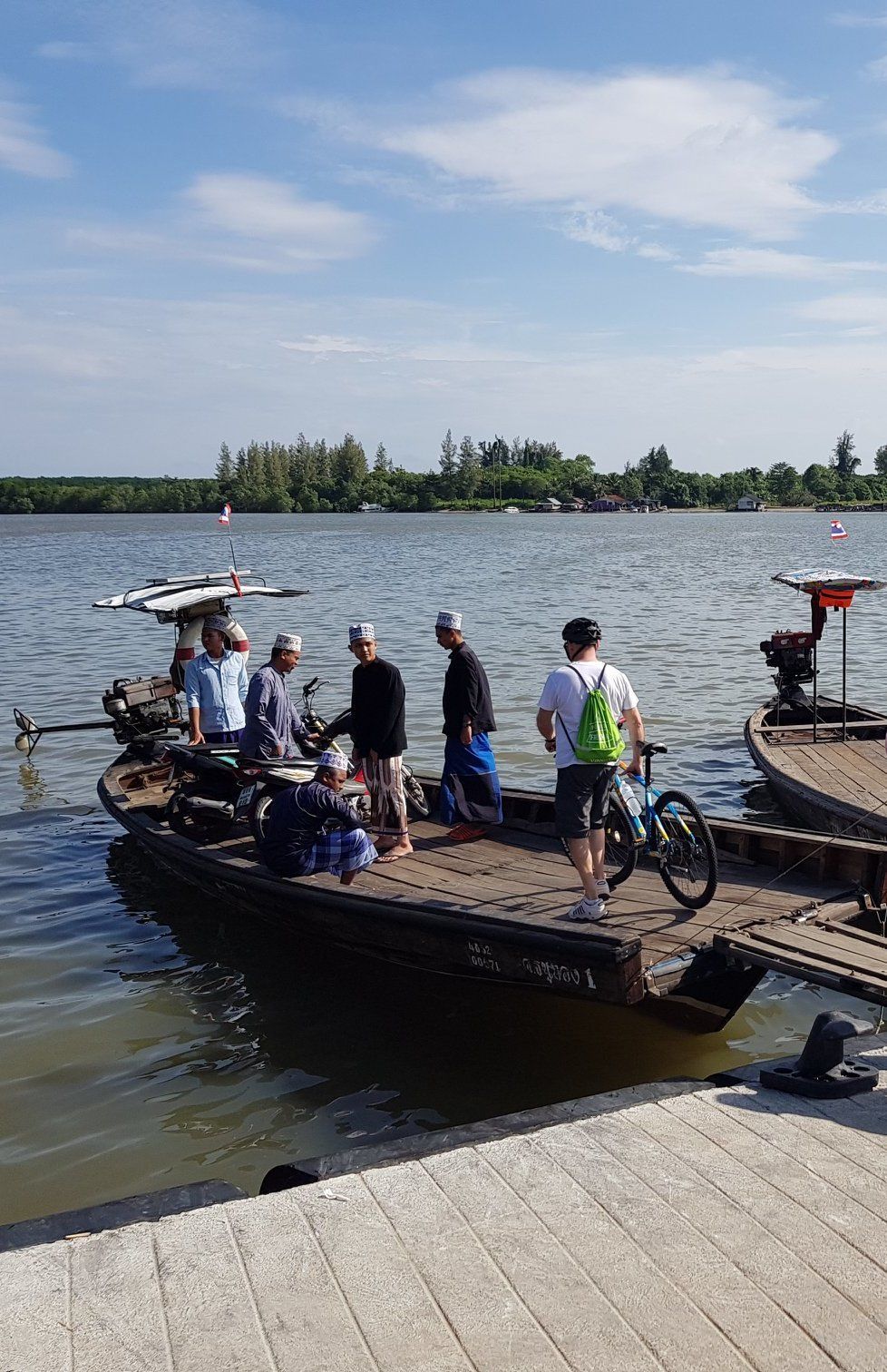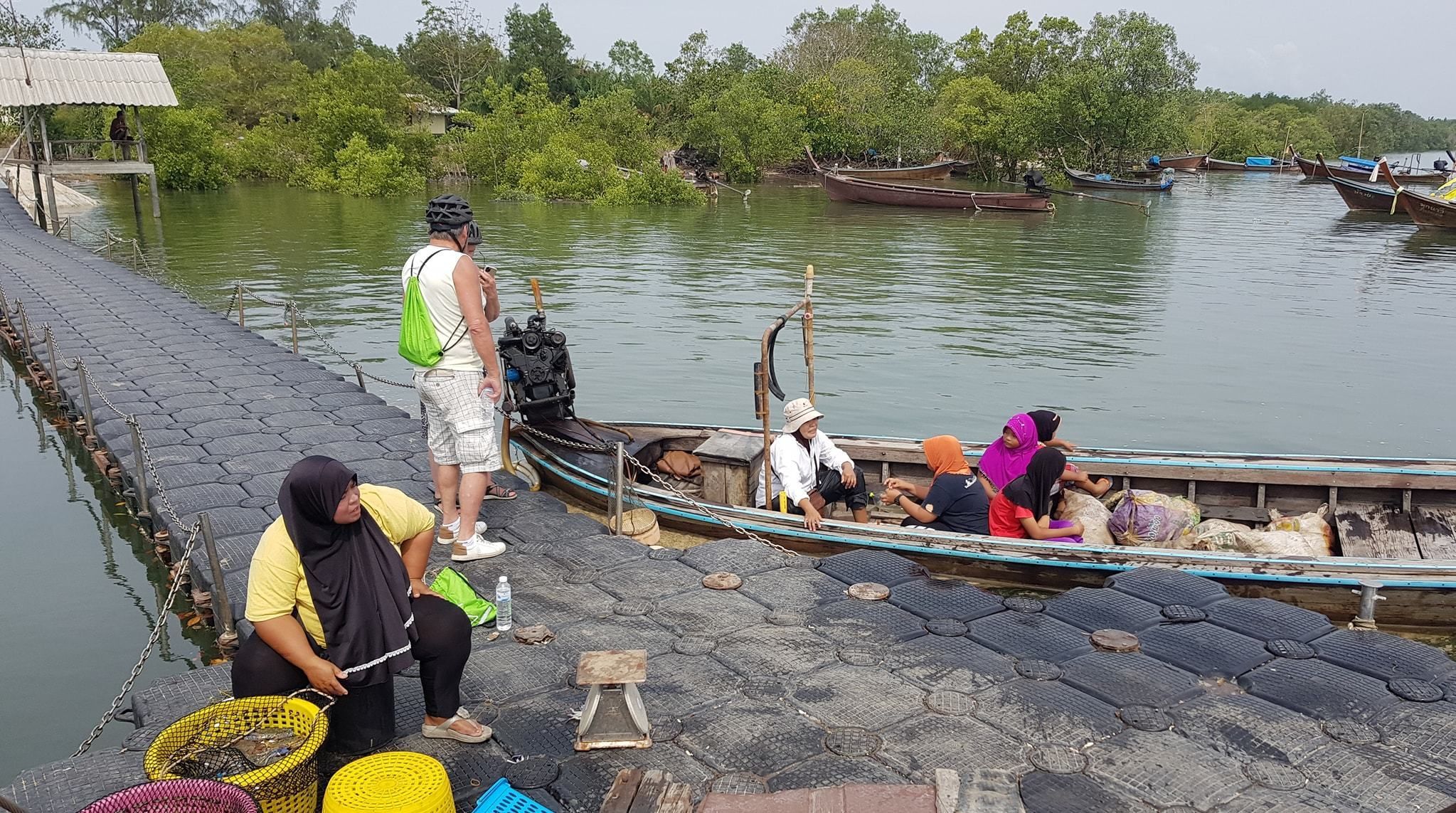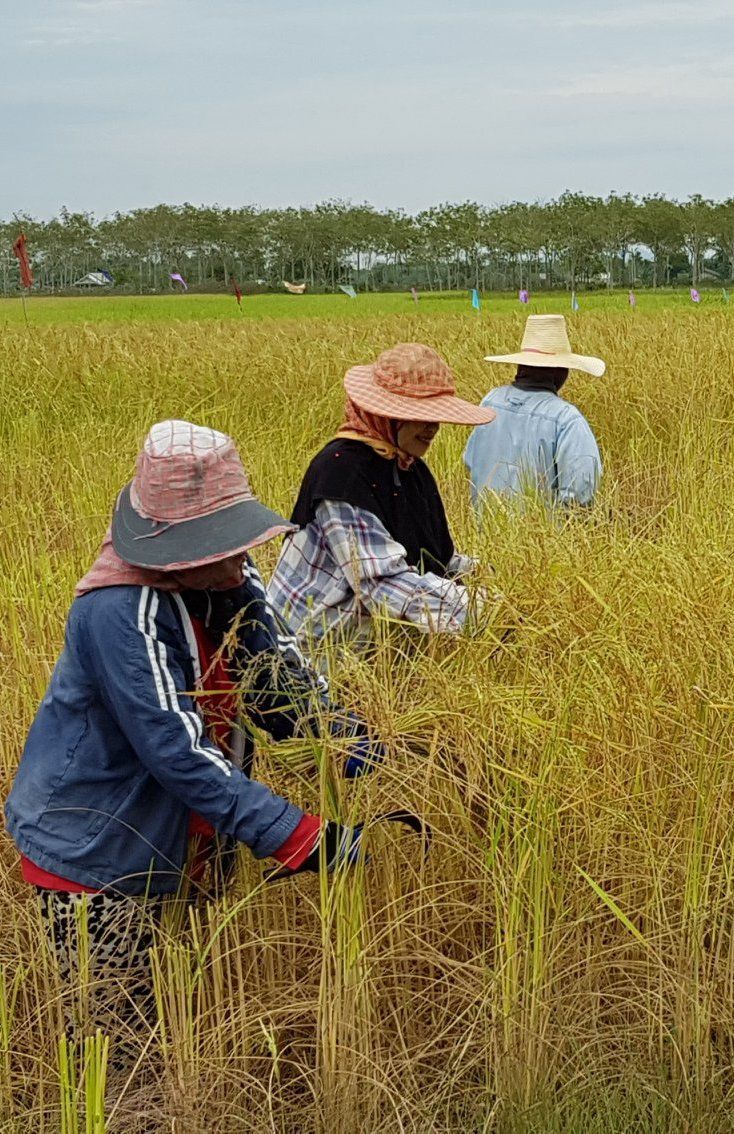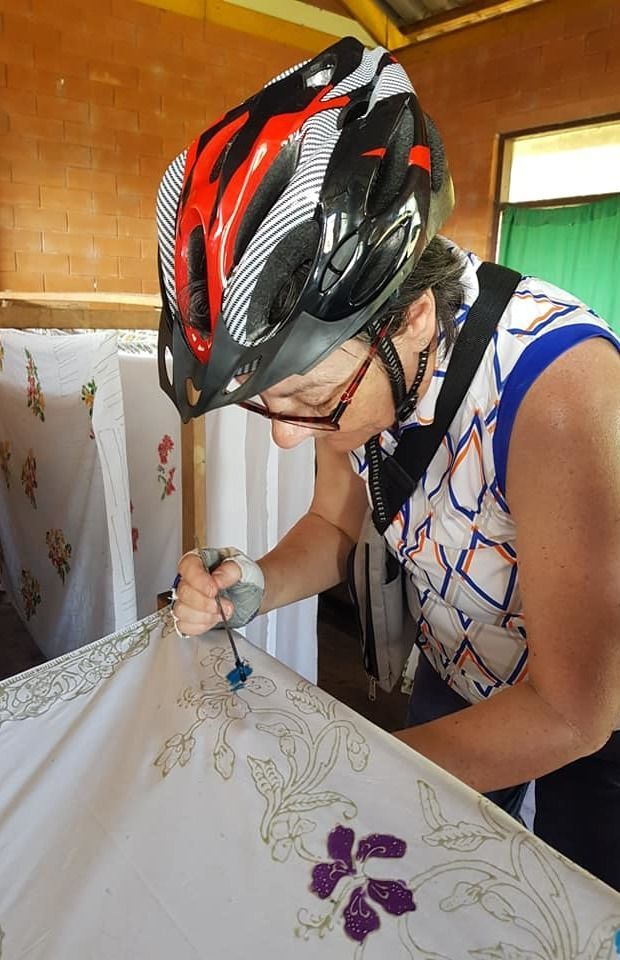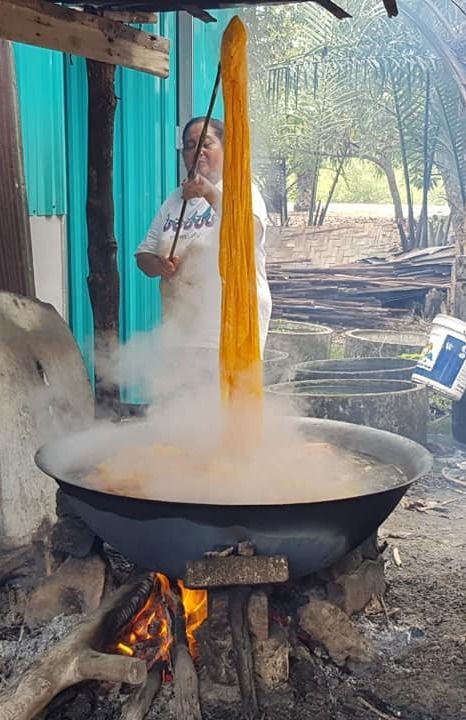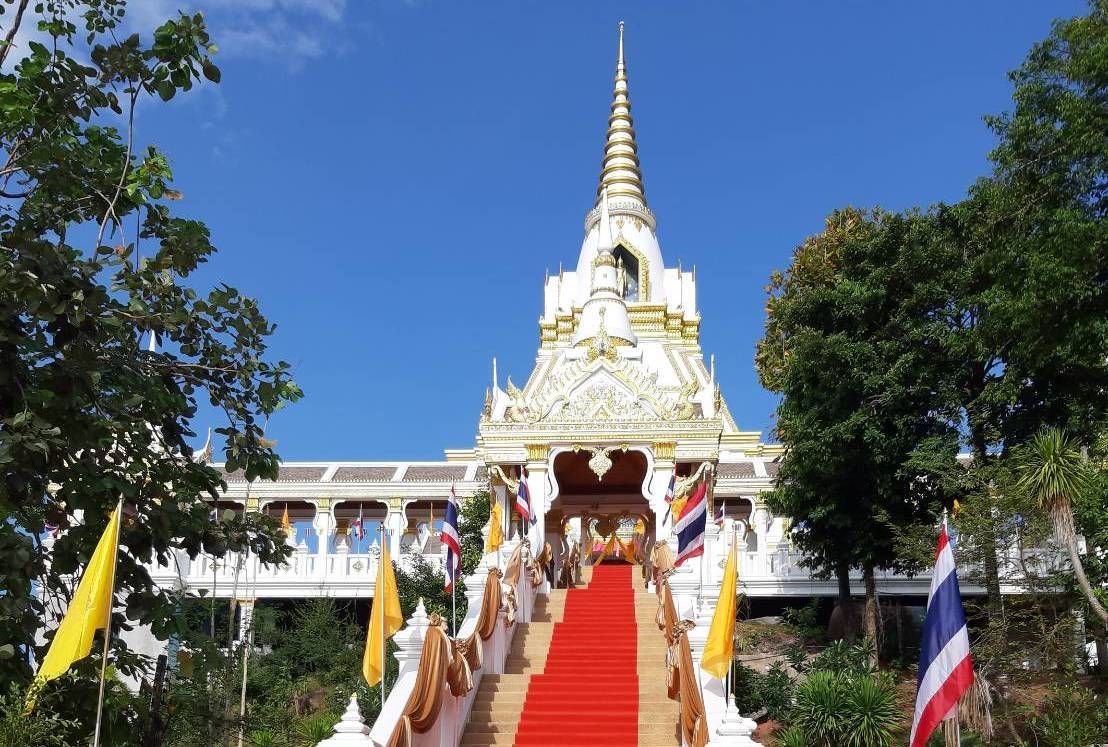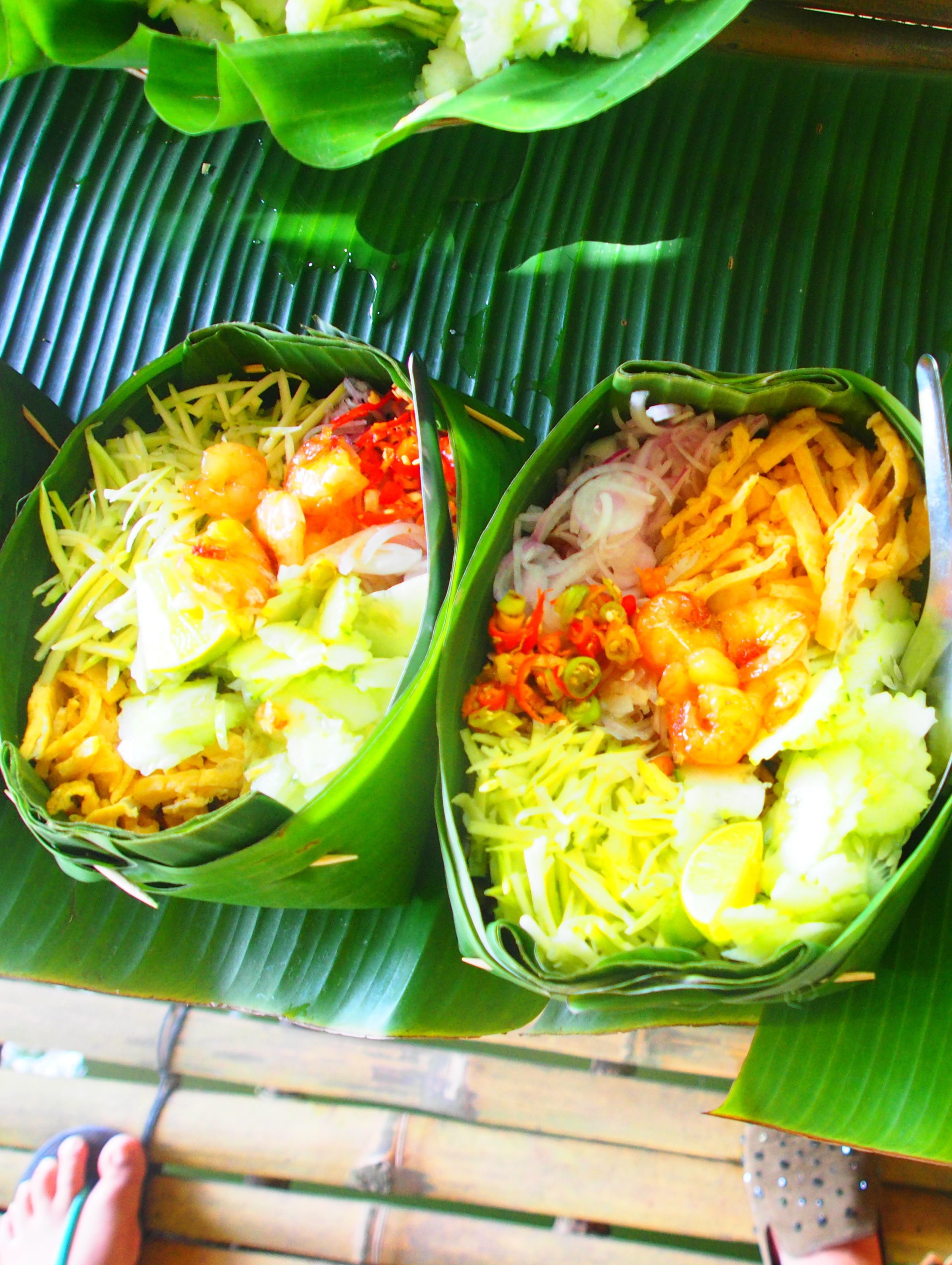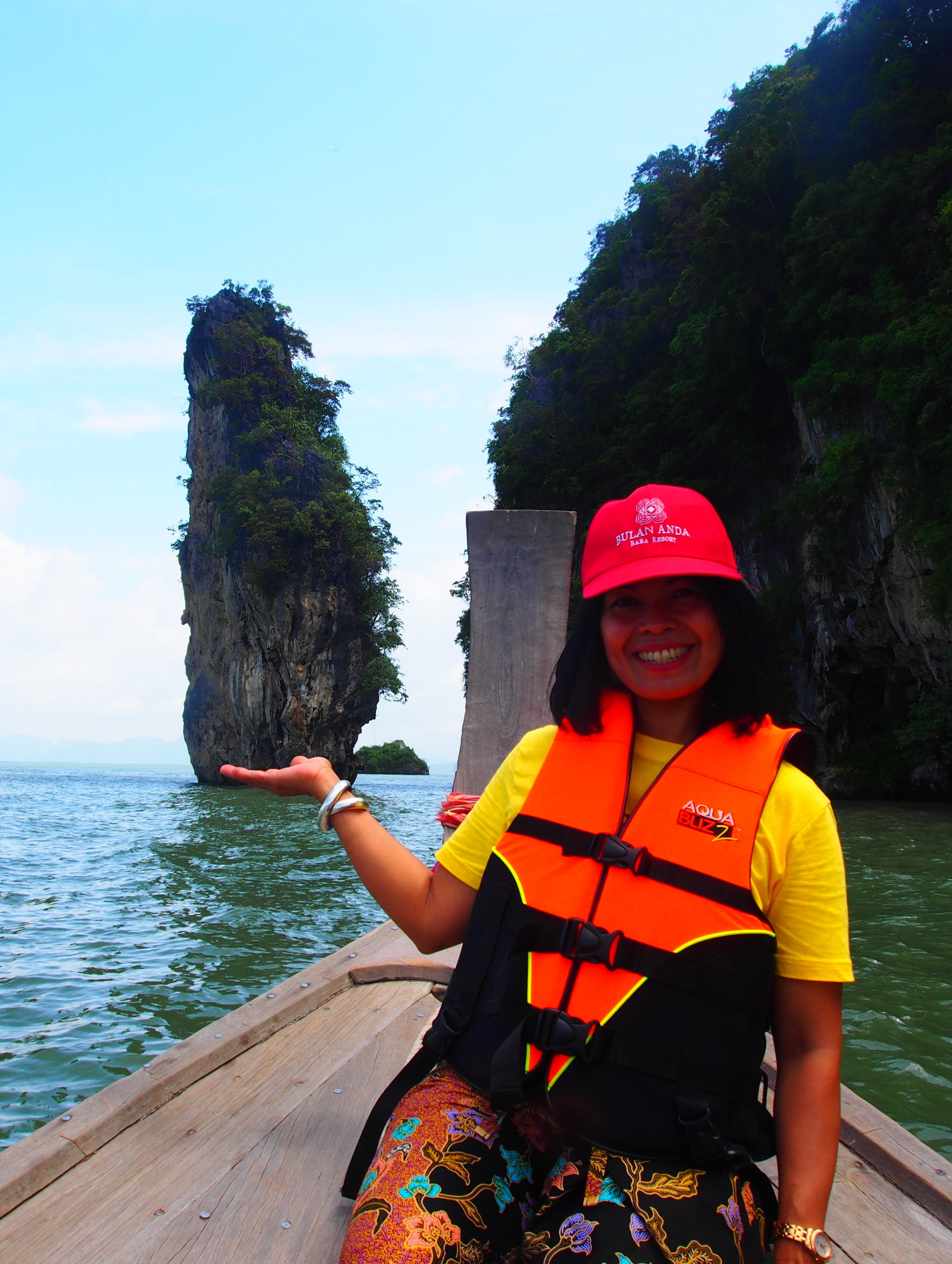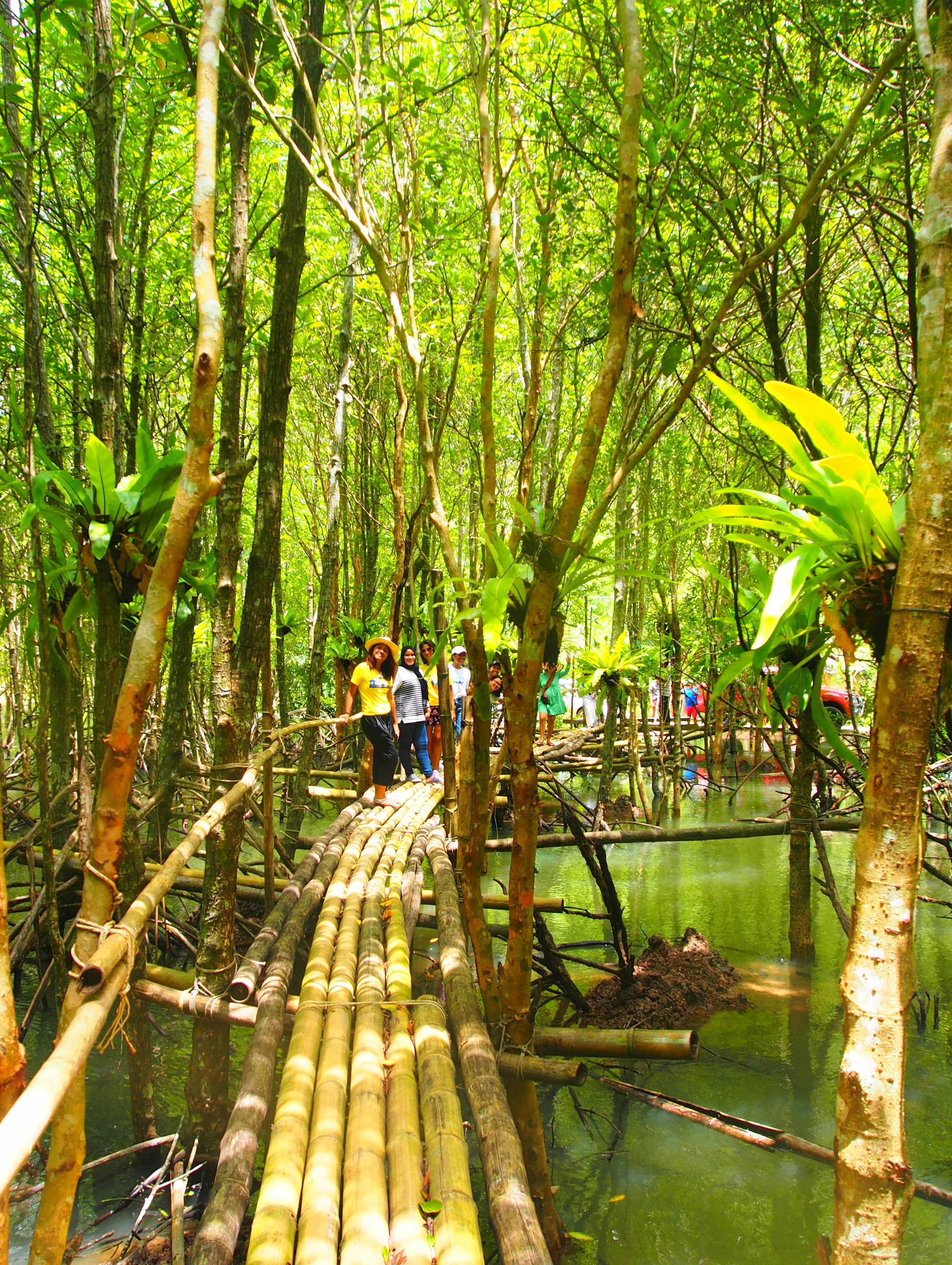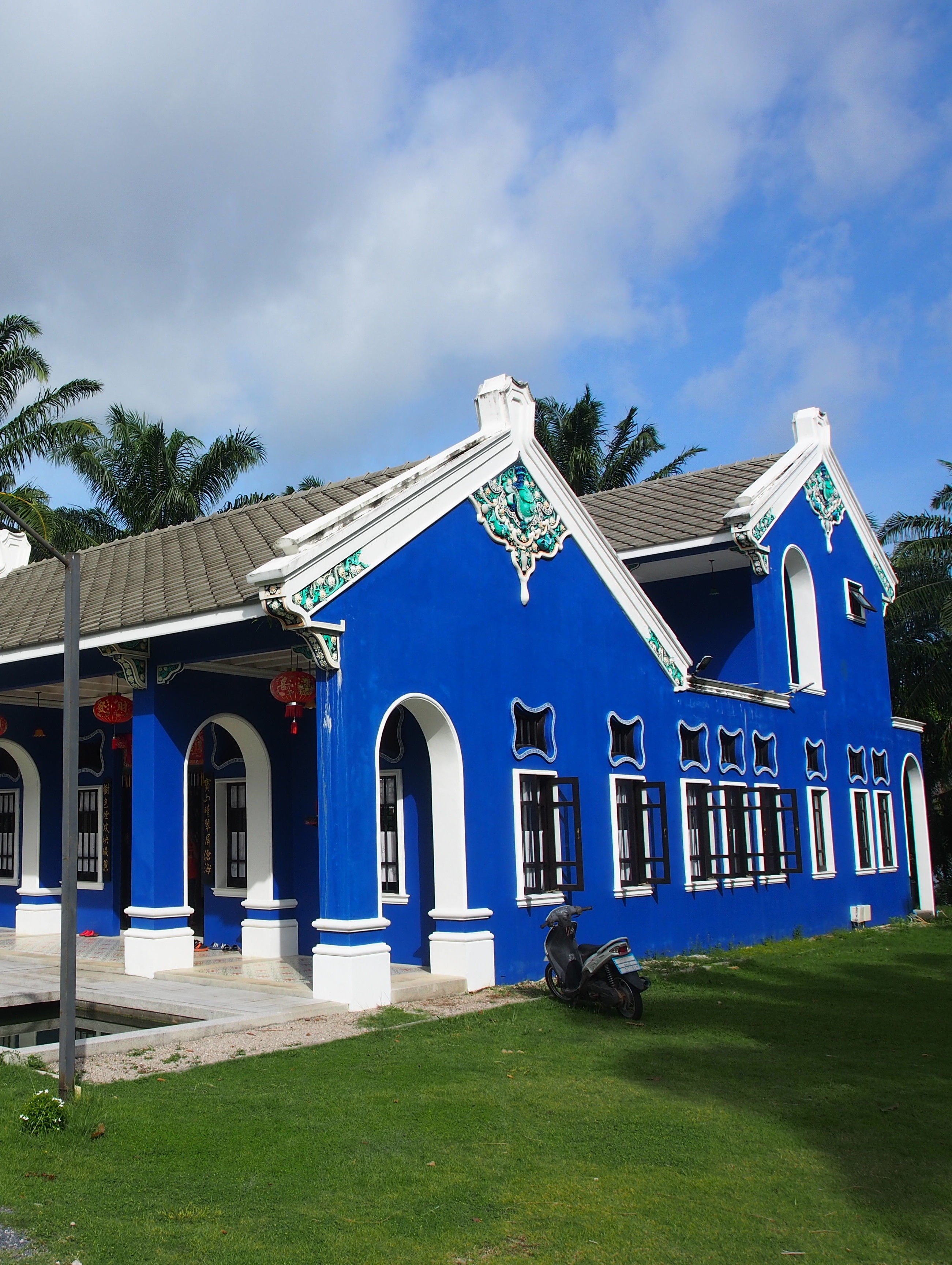History of Krabi
Krabi, on southern Thailand’s west coast, is a province characterized by craggy, sheer limestone cliffs, dense mangrove forests, and more than a hundred offshore islands. Some of its most popular beach destinations include the Phi Phi Islands, which jut from the sea like giant rainforested boulders, and Railay Beach, accessible only by boat and a prominent rock-climbing spot.
Population: 483,855 (2024)
Archeological evidences suggest that Krabi was a prehistoric community that has existed since the past until today. A lot of tools of the stone Age were widespread, and ancient color paintings were found in many caves in Krabi.
Krabi is one of the 12 signs of the zodiac. The logo of the province is the monkey (the year of the monkey). Krabi was founded in the reign of King Rama V of the Rattanakosi Kingdom. At that time, Krabi was only a district under the administration of Nakorn Si Thammarat, called "Pakasai District" In 1872, Krabi was appointed a city and given the name "Krabi City" by the King. Luang Thep Sena was the first governor of Krabi.
In 1875, Krabi was appointed a fourth-degree outer town reporting directly to Bangkok in 1900, Phraya Ratsadanupradit (Kosimby Na Ranong), the lord lieutenant of Phuket, moved the city to Pak Nam sub-district, a deep channel near the estuary where large ships could easily approach the port. This has become the provincial hall until today.
Meaning of the Name Krabi
Lore has it that local villagers found an ancient sword and gave it to the governor. Shortly after, another bigger sword was found and given to the governor again. The governor crossed the two swords in a mountain cave by a river while anticipating the establishment of the city. Later, crossed swords or sabers became the logo of the city. Different lore holds that the word "Krabi" is derived from the name of a local plant, "Lumpi," so the city is called Ban Lumpi. Then, the word is mispronounced by Malay and Chinese traders to "Ban Ka Lu Bi" or "Kolobi," which is later pronounced "Krabi" by Thais.
Krabi Sustainable Tourism
Today, the mainstream tourism of Krabi is accepted worldwide, which, as a result, has an inevitable impact on the society, community, and lifestyle of local villagers. Adaptation to maintain balance is crucial and urgent, which aligns with the national development agenda at the macro and micro level. Local comminities must improve and adapt. Local lifestyle must accommodate new forms of tourism to establish security, prosperity, and sustainability in local communities. Today, Krabi is ready to welcome visitors to all of our tourism communities, each of which reflects its unique and interesting identity, wisdom, and lifestyle.
Dos and Don'ts for CBT (Community Based Tourism)
Tourism communities in Krabi feature cultural and religious diversity. Populations are made up of Buddhists, Muslims, Christians, and Hokkien Chinese who pass on Peranakan, or Baba-Nyonya, culture. Their community practice is strict, thus visitors should be advised and prepared before entering their communities. Like the Thai temple, Please take off shoes, Dress politely and do not talk loudly.
Recommendations
Every tourism community has its habitual everyday life. Community-based tourism is an additional occupation. Every community has community coordinators to welcome visitors. Before visiting each community, visitors should contact community coordinators to make an appointment and arrange an appropriate travel program. Many activities depend on the tide, and some activities are not organized daily. Visitors who do not make an appointment prior to their visit might not receive the hospitality and convenience described in this website.
The Legend of Phra Nang Cave, Krabi
The legend begins with a couple known as Tai Modueng who longed deeply for a child. They prayed earnestly to the Naga King, the serpent deity of the underworld, asking for his blessing. The Naga King heard their plea and agreed to grant them a child, but under one condition:
if their child was a daughter, she must be wed to his son.
Time passed, and the couple’s wish was fulfilled. They were blessed with a beautiful baby girl named Nang. As she grew into a young woman, Nang fell in love with Boon, the son of another local family known as Tai Wa Prab. Their affection blossomed, and despite the promise once made to the Naga King, both families eventually agreed to arrange the marriage between Nang and Boon, though their hearts were filled with unease.
When the Naga King learned that the couple had broken their vow, he was consumed with anger. On the day of the wedding, he transformed himself into a human and emerged to claim Nang as his rightful bride. His sudden appearance threw the ceremony into chaos.
A hermit who had long lived in the nearby mountains, witnessing the turmoil, tried to intervene and restore peace — but his efforts were in vain. In his sorrow and frustration, the hermit cast a powerful curse that turned everything into stone.
The wedding hall became Phra Nang Cave.
The sticky rice pudding prepared for the wedding feast turned into Susan Hoi, the Shell Cemetery.
Household items and offerings were transformed into nearby islands — Koh Mor, Koh Tup, and others scattered along the Andaman Sea.
The Naga King himself was turned into Khao Hang Nak, the Dragon Crest Mountain that stands majestically over Krabi to this day.
Phra Nang Cave Today
Phra Nang Cave is a small, shallow cave located at the southern end of Ao Phra Nang Beach (not to be confused with Ao Nang Beach, which is a different area). Inside the cave stands a sacred shrine dedicated to Phra Nang, revered by local fishermen and seafarers. It is a place of worship where offerings of flowers, incense, and carved wooden lingams (symbols of fertility and life) are presented in devotion.
While the cave itself contains a few stalactites and stalagmites, its true charm lies in its cultural significance and stunning seaside setting. Surrounding the cave, local vendors sell refreshments and souvenirs under colorful umbrellas.
Visitors who come to Phra Nang Beach can pay their respects at the shrine, relax on the soft golden sand, or swim in the crystal-clear turquoise waters — where the legend of Phra Nang continues to live on with the whispers of the sea breeze.
.jpg)
The Legend of Khao Ngon Nak (Dragon Crest Mountain), Krabi
Long ago, there lived a couple named Tayom Dueng who resided peacefully by the sea. Though they had been together for many years, they remained childless, and as time passed, they grew worried that there would be no one to care for them in their old age. Out of deep longing, they prayed to the Naga King, the great serpent deity of the underworld, asking for a child.
The Naga King took pity on them and granted their wish — but with a solemn condition:
If the couple were blessed with a daughter, she must be given to the Naga’s son as his bride when she came of age.
Time went by, and Tai Modueng’s wish was fulfilled. They were blessed with a beautiful daughter, whom they lovingly named Luk Nang. As the years passed, Luk Nang grew into a graceful young woman and fell in love with Boon, the handsome son of another villager named Ta Wa Prab. Their love was pure and sincere, and though both families remembered the promise once made to the Naga King, they reluctantly agreed to arrange the marriage between Nang and Boon.
When the Naga King learned that the vow had been broken, his rage shook the heavens. On the day of the wedding, he transformed himself into a human and appeared at the ceremony to seize Nang for himself. A fierce and relentless battle erupted between the Naga and Boon, raging across days, nights, and even seasons. Each clash of their powers unleashed mighty storms and crashing waves, tormenting the villagers who could neither sleep nor work, terrified by the chaos that filled the land.
At last, a powerful hermit, who had long been meditating in the nearby mountains, descended to stop the conflict. But his words fell upon deaf ears. In his sorrow, the hermit cast a powerful curse, turning everything into stone.
The wedding hall became Phra Nang Cave.
The sweet sticky rice prepared for the ceremony became Susan Hoi, the Shell Cemetery.
The wedding gifts and household items turned into nearby islands — Koh Mor, Koh Tup, and others scattered around the coast of Nong Thale.
The Naga himself was turned into Khao Ngon Nak — the “Mountain of the Serpent’s Crest” — and his tail stretched out to form Laem Hang Nak, the Dragon’s Tail Cape.
It is said that the Naga’s tears created a small, crystal-clear spring known as Nam Tanak, or “the Naga’s Tears,” which still flows year-round atop the mountain. Local people believe that anyone who prays to To Nak, the spirit of the Naga, and drinks this sacred water will have their wishes granted and be blessed with good fortune.
The Naga’s severed crest, struck off during the battle, is said to have fallen into a nearby village, giving rise to the name Khao Klom. The Naga’s navel, known as Saduea Nak, is another sacred spring believed to be connected underground to Nam Tanak — both fed by the same spiritual source that runs through the mountain, the body of the Naga himself.
The site of the great battle became Bueng Nong Thale, the large lake that remains to this day. The blood of the Naga, spilled upon the earth, turned the soil red and gave the nearby village its name, Din Daeng Noi, meaning “the little red land.”
Even the Naga’s companions and Boon’s friends were not spared — all turned into stone, becoming the islands now known as Koh Kwahng and Laem Mook Kwai.
And so, the landscape of Krabi — its mountains, capes, and islands — was shaped by the timeless story of love, betrayal, and divine wrath, a tale still whispered among locals and honored through generations.
.jpg)
The Legend and History of Khao Khanab Nam, Krabi
The legend of Khao Khanab Nam is one of Krabi’s most beloved folktales — a story that intertwines love, jealousy, and tragedy between a Naga King and a Giant, whose battle shaped the landscape that still defines Krabi today.
The Legend
Long ago, in an ancient kingdom, there lived a beautiful princess known for her kindness and grace. Her beauty captured the hearts of all who beheld her — including two powerful beings: the Naga King, a mighty serpent lord of the underworld, and the Giant of Khanab Nam, a fierce guardian spirit of the mountains.
One day, the Naga King, whose name was Phaya Nakaraj, journeyed to the princess’s realm. Enchanted by her beauty, he used his magical powers to transform into a handsome young man and asked for her hand in marriage. The princess, captivated by his charm, agreed, and the two were soon wed.
When the Giant of Khanab Nam heard that the princess had married the Naga King, jealousy and anger consumed him. In a fit of rage, he devised a plan to kidnap the princess and make her his own. One moonlit night, the Giant stormed the palace and carried her away.
The Naga King, upon discovering the abduction, pursued them with fury. What followed was a fierce and cataclysmic battle between the Naga and the Giant — a battle that shook the heavens and churned the seas. The fight raged for days and nights until both the Naga and the Giant perished.
Their lifeless bodies transformed into the two limestone mountains that stand side by side today, known as Khao Khanab Nam — the Twin Mountains guarding the Krabi River. The larger peak is said to be the body of the Naga, while the smaller one is believed to be that of the Giant.
Within the mountain caves, stalactites and stalagmites form naturally sculpted shapes. Among them, one formation is said to resemble the face of the fallen Giant, marking the place where he took his final breath.
The Historical and Archaeological Significance
Beyond its legend, Khao Khanab Nam Cave holds great historical importance. Located within the Krabi Municipality, the cave stretches approximately 500 meters through ancient limestone cliffs estimated to be over 300 million years old.
Inside, explorers can marvel at age-old rock formations, a small waterfall, and remarkable traces of early human life.
In 1983, the Fine Arts Department of Thailand conducted archaeological excavations inside the cave, uncovering numerous artifacts — including prehistoric human skeletons, stone tools, pottery, and ornaments — dating from the Neolithic, Bronze, and Iron Ages. These findings prove that the cave was once home to humans thousands of years ago.
Modern-Day Significance and Art Installation
Today, Khao Khanab Nam Cave is one of Krabi’s most iconic landmarks and is open to visitors year-round. Tourists can reach the site by taking a scenic 15-minute longtail boat ride from the Krabi River pier near the town center.
In 2018, the cave gained international attention during the Thailand Biennale Krabi 2018, an international art exhibition featuring works from over 50 artists around the world. Among the highlights was an installation titled “Giant Ruins” by Taiwanese artist Dr. Tu Wei-Cheng.
This captivating piece recreated the skeleton of a giant entwined by the bones of a massive serpent, symbolizing the legendary battle between the Naga King and the Giant. The artwork, designed to resemble an archaeological excavation site, reflects the fusion of ancient Thai mythology, archaeology, and modern artistic expression.
Displayed inside Khao Khanab Nam Cave in Khlong Prasong Subdistrict, the installation continues to draw visitors fascinated by its dramatic presentation and its deep connection to Krabi’s spiritual and cultural heritage.
Khao Khanab Nam stands today not only as a natural landmark but also as a symbol of Krabi’s identity — where myth meets history, and the echoes of the past continue to resonate through art, nature, and local belief.


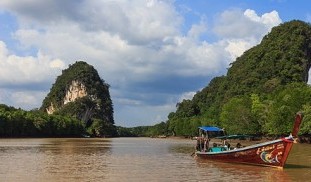






.jpg)
.jpg)
